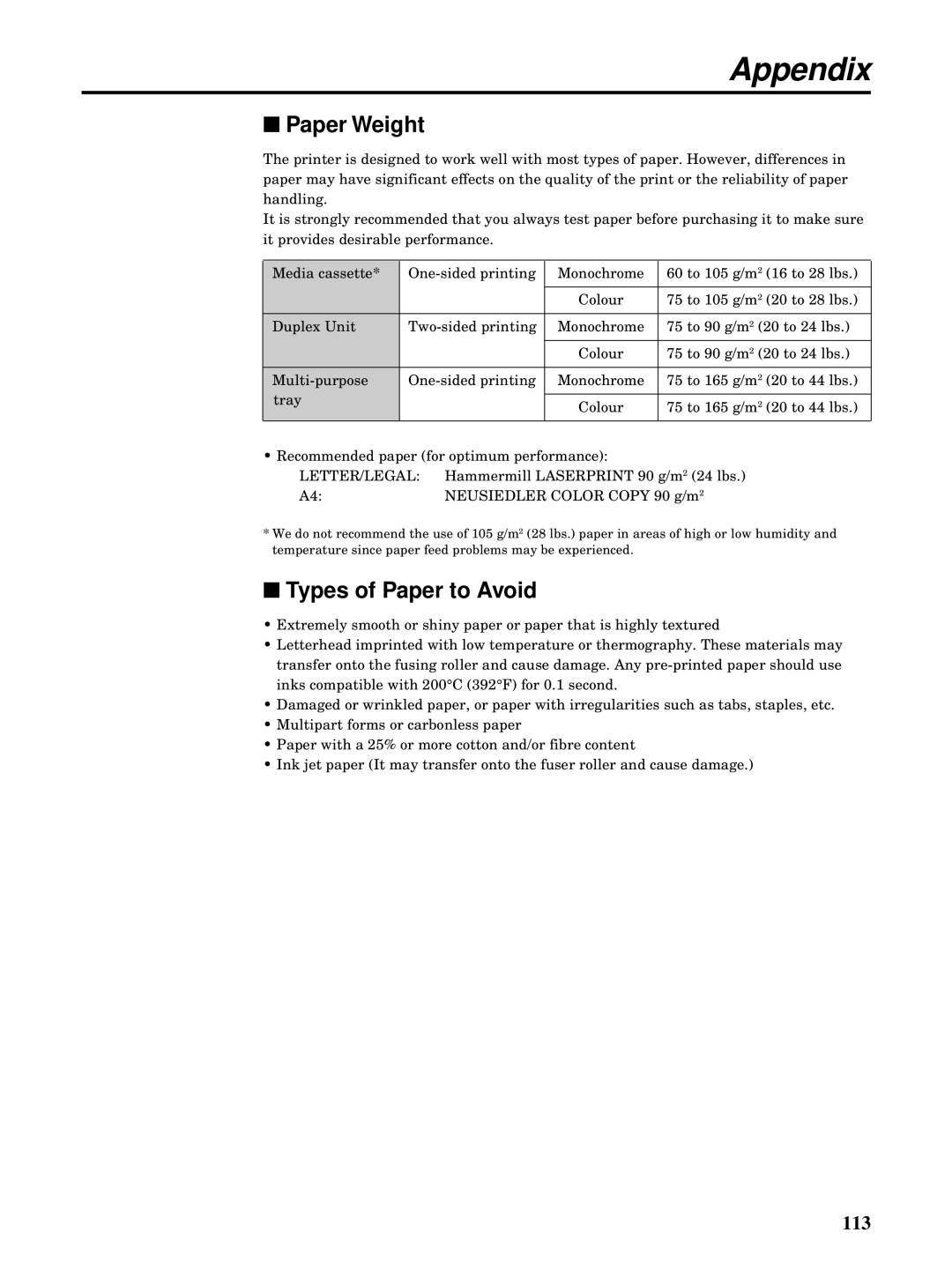Appendix
■Paper Weight
The printer is designed to work well with most types of paper. However, differences in paper may have significant effects on the quality of the print or the reliability of paper handling.
It is strongly recommended that you always test paper before purchasing it to make sure it provides desirable performance.
Media cassette* | Monochrome | 60 to 105 g/m2 | (16 to 28 lbs.) | ||
|
|
|
|
| |
|
| Colour | 75 to 105 g/m2 | (20 to 28 lbs.) | |
Duplex Unit | Monochrome | 75 to 90 g/m2 | (20 to 24 lbs.) | ||
|
|
|
|
| |
|
| Colour | 75 to 90 g/m2 | (20 to 24 lbs.) | |
Monochrome | 75 to 165 g/m2 | (20 to 44 lbs.) | |||
tray |
|
|
|
| |
| Colour | 75 to 165 g/m2 | (20 to 44 lbs.) | ||
|
|
|
|
|
|
• Recommended paper (for optimum performance):
LETTER/LEGAL: | Hammermill LASERPRINT 90 g/m2 (24 lbs.) |
A4: | NEUSIEDLER COLOR COPY 90 g/m2 |
*We do not recommend the use of 105 g/m2 (28 lbs.) paper in areas of high or low humidity and temperature since paper feed problems may be experienced.
■Types of Paper to Avoid
•Extremely smooth or shiny paper or paper that is highly textured
•Letterhead imprinted with low temperature or thermography. These materials may transfer onto the fusing roller and cause damage. Any
•Damaged or wrinkled paper, or paper with irregularities such as tabs, staples, etc.
•Multipart forms or carbonless paper
•Paper with a 25% or more cotton and/or fibre content
•Ink jet paper (It may transfer onto the fuser roller and cause damage.)
113
